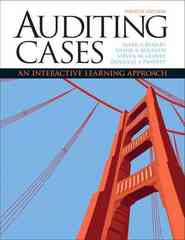Question
In this homework, you'll have the chance to implement the perceptron algorithm to separate the following data (given in the file homework3_data.csv). Recall that the
In this homework, you'll have the chance to implement the perceptron algorithm to separate the following data (given in the file homework3_data.csv).
Recall that the perceptron step works as follows. For a point with coordinates (p,q), label y, and prediction given by the equation y^=step(w1x1+w2x2+b):
If the point is correctly classified, do nothing.
If the point is classified positive, but it has a negative label, update w_1, w_2,w1,w2, and b respectively.
If the point is classified negative, but it has a positive label, update w_1, w_2,w1,w2, and b respectively.
ZOOM
import numpy as np # Setting the random seed, feel free to change it and see different solutions. np.random.seed(42) def stepFunction(t): if t >= 0: return 1 return 0 def prediction(X, W, b): return stepFunction((np.matmul(X,W)+b)[0]) # TODO: Fill in the code below to implement the perceptron trick. # The function should receive as inputs the data X, the labels y, # the weights W (as an array), and the bias b, # update the weights and bias W, b, according to the perceptron algorithm, # and return W and b. def perceptronStep(X, y, W, b, learn_rate = 0.01): # Fill in code return W, b # This function runs the perceptron algorithm repeatedly on the dataset, # and returns a few of the boundary lines obtained in the iterations, # for plotting purposes. # Feel free to play with the learning rate and the num_epochs, # and see your results plotted below. def trainPerceptronAlgorithm(X, y, learn_rate = 0.01, num_epochs = 25): x_min, x_max = min(X.T[0]), max(X.T[0]) y_min, y_max = min(X.T[1]), max(X.T[1]) W = np.array(np.random.rand(2,1)) b = np.random.rand(1)[0] + x_max # These are the solution lines that get plotted below. boundary_lines = [] for i in range(num_epochs): # In each epoch, we apply the perceptron step. W, b = perceptronStep(X, y, W, b, learn_rate) boundary_lines.append((-W[0]/W[1], -b/W[1])) return boundary_lines
0.78051 -0.063669 1 0.28774 0.29139 1 0.40714 0.17878 1 0.2923 0.4217 1 0.50922 0.35256 1 0.27785 0.10802 1 0.27527 0.33223 1 0.43999 0.31245 1 0.33557 0.42984 1 0.23448 0.24986 1 ######## 0.13658 1 0.12419 0.33595 1 0.25644 0.42624 1 0.4591 0.40426 1 0.44547 0.45117 1 0.42218 0.20118 1 0.49563 0.21445 1 0.30848 0.24306 1 0.39707 0.44438 1 0.32945 0.39217 1 0.40739 0.40271 1 0.3106 0.50702 1 0.49638 0.45384 1 0.10073 0.32053 1 0.69907 0.37307 1 0.29767 0.69648 1 0.15099 0.57341 1 0.16427 0.27759 1 0.33259 0.055964 1 0.53741 0.28637 1 0.19503 0.36879 1 0.40278 0.035148 1 0.21296 0.55169 1 0.48447 0.56991 1 0.25476 0.34596 1 0.21726 0.28641 1 0.67078 0.46538 1 0.3815 0.4622 1 0.53838 0.32774 1 0.4849 0.26071 1 0.37095 0.38809 1 0.54527 0.63911 1 0.32149 0.12007 1 0.42216 0.61666 1 0.10194 0.060408 1 0.15254 0.2168 1 0.45558 0.43769 1 0.28488 0.52142 1 0.27633 0.21264 1 0.39748 0.31902 1 0.5533 1 0 0.44274 0.59205 0 0.85176 0.6612 0 0.60436 0.86605 0 0.68243 0.48301 0 1 0.76815 0 0.72989 0.8107 0 0.67377 0.77975 0 0.78761 0.58177 0 0.71442 0.7668 0 0.49379 0.54226 0 0.78974 0.74233 0 0.67905 0.60921 0 0.6642 0.72519 0 0.79396 0.56789 0 0.70758 0.76022 0 0.59421 0.61857 0 0.49364 0.56224 0 0.77707 0.35025 0 0.79785 0.76921 0 0.70876 0.96764 0 0.69176 0.60865 0 0.66408 0.92075 0 0.65973 0.66666 0 0.64574 0.56845 0 0.89639 0.7085 0 0.85476 0.63167 0 0.62091 0.80424 0 0.79057 0.56108 0 0.58935 0.71582 0 0.56846 0.7406 0 0.65912 0.71548 0 0.70938 0.74041 0 0.59154 0.62927 0 0.45829 0.4641 0 0.79982 0.74847 0 0.60974 0.54757 0 0.68127 0.86985 0 0.76694 0.64736 0 0.69048 0.83058 0 0.68122 0.96541 0 0.73229 0.64245 0 0.76145 0.60138 0 0.58985 0.86955 0 0.73145 0.74516 0 0.77029 0.7014 0 0.73156 0.71782 0 0.44556 0.57991 0 0.85275 0.85987 0 0.51912 0.62359 0
Step by Step Solution
There are 3 Steps involved in it
Step: 1

Get Instant Access to Expert-Tailored Solutions
See step-by-step solutions with expert insights and AI powered tools for academic success
Step: 2

Step: 3

Ace Your Homework with AI
Get the answers you need in no time with our AI-driven, step-by-step assistance
Get Started


